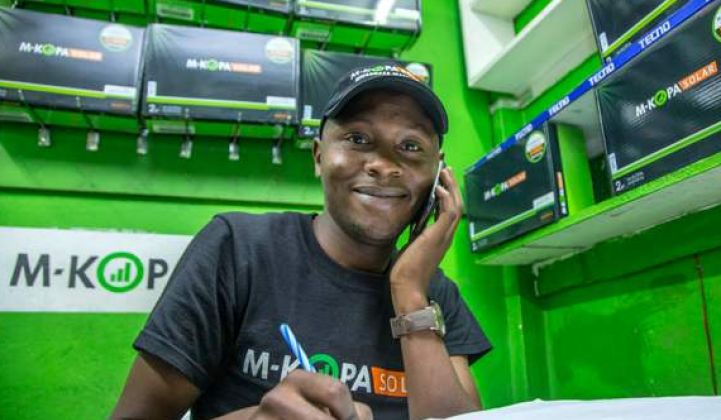The off-grid clean energy sector is breaking records, surpassing the $112 million mark with a marquee equity round just announced this week by M-Kopa for $19 million.
M-Kopa is a solar firm that helps people pay for PV and lighting systems through a mobile payment system. The model is dubbed "pay-as-you-go" solar.
As of the middle of the fourth quarter, Bloomberg New Energy Finance and the Global Off Grid Lighting Association put the total at $131 million.
The first month of 2015 saw $42 million raised -- two-thirds of what the industry pulled in last year.
The dramatic increase in investments demonstrates how the sector is graduating from smaller impact investors to large mainstream firms, such as Generation Investment Management LLP, which led the M-Kopa round and also invested in the likes of SolarCity and Nest Labs.
Earlier this fall, Off-Grid Electric closed a $25 million round from DBL Partners and other big investors such as Omidyar, Vulcan Capital and Microsoft’s Paul Allen.
Just a few years ago, beyond-the-grid enterprises were scraping together capital from awards, friends, family and small social funds. With investors like Sir Richard Branson and Jean and Steve Case of AOL fame, these companies are getting much more attention.
“We are seeing plenty of interest -- we are in a lucky position now that, especially on the equity side, we turn away far more offers of funding than we actually raise," said Chad Larson, M-Kopa's finance director.
"When we have let individuals into our deals, it has always been carefully considering the value they bring -- it has not been about the money. For example, in this round, Steve and Jean Case participated, which was not for the purpose of raising additional cash, but rather to get such great business minds involved in M-Kopa," said Larson.
M-Kopa will use the money to build up its customer acquisition platform and to develop more energy and financing services on top of its existing solar offering.
At the broader the industry level, there are still financial barriers to achieving scale.
The industry has made progress on creative solutions for lending with notable contributions from foundations like Packard, and bilateral progress from OPIC, Power Africa, and the Development Credit Authority. However, activating more domestic banks to lend in local currency, thus driving down risk and increasing overall deal sizes, is still very difficult.
Capital markets in sub-Saharan African countries tied to London, New York and Singapore need strength so beyond-the-grid enterprises like M-Kopa can thrive.
Next year will usher in the long-awaited lending models that favor collaborative structures found in syndicated loans. By pooling efforts and capital, larger deal sizes can be realized while diversifying risk over many balance sheets -- a win-win for lenders and enterprises alike.



